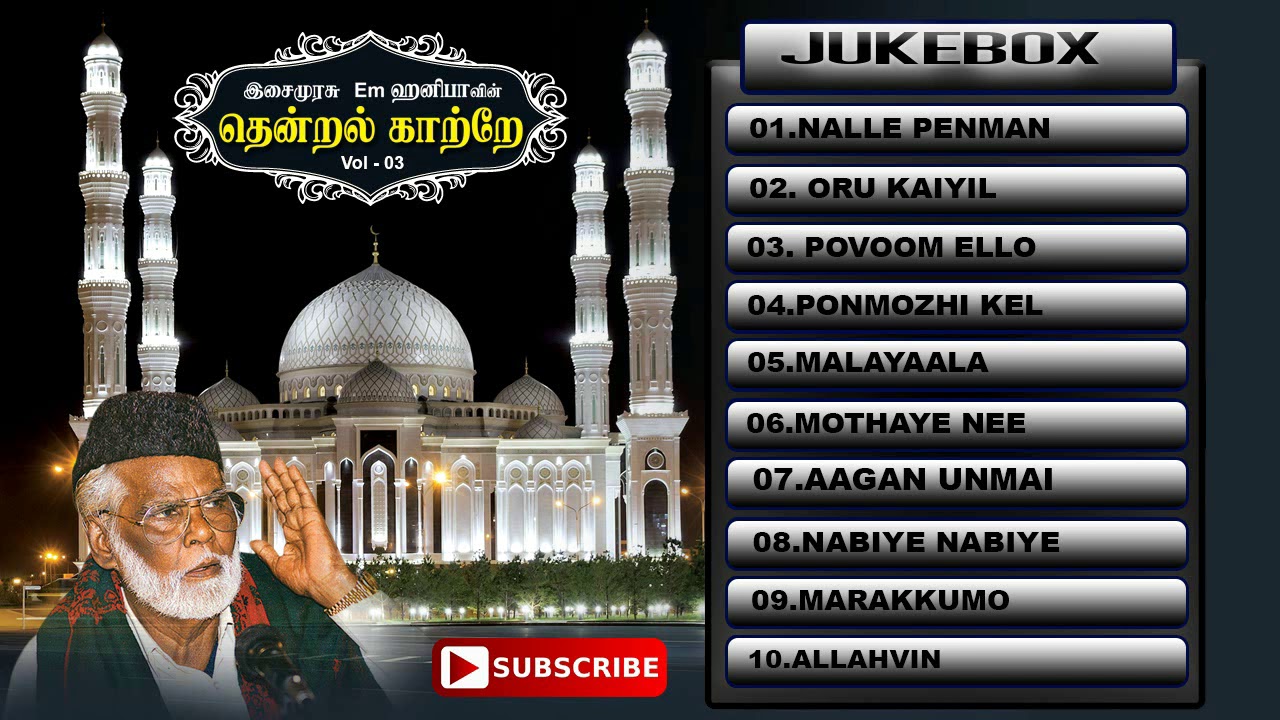

Later, the same composer, now more famous as Ilayaraja, persuaded him to render the haunting The tune, composed on Hanifa’s own harmonium, was a big hit for the duo. In the 1970s, says Ali, a young composer called Rasaiyya was assigned by recording company His Master’s Voice (HMV), to work with Nagore Hanifa on the song Paava Manippu (1965), before returning full-time to political anthems and devotional music. “But my father was not open to suggestions from film composers to adopt a more secular name like ‘Kumar’ – ‘it’s more satisfying to sing four songs as Hanifa than a crore songs as Kumar,’ he’d say – and moreover, the timbre of his voice was too strong for the image of the heroes who were in vogue then,” says Ali. It was not long before the cinema industry came calling. Oadi varugiran Udhayasooriyan, Kallakkudi konda Karunanidhi vaazhgave, Nee engae senrai Anna andĪzhaikkinrar Anna are still used by the DMK to raise party morale.Įven so, fans of his voice, at once stentorian and artistic, cut across party lines, says Ali. Hanifa’s rousing anthems boosted the fortunes of the Dravida Munnetra Kazhagam from the 1930s. The two nonagenarians are said to share warm vibes till today, and the tenth state-level DMK conference held in Tiruchi in February was the first one that Hanifa missed since the party was launched in 1949. “My father used to sing before the lecture meetings organised by Karunanidhi, without any musical accompaniment or payment, to attract the crowds on the dry riverbed of the Odampokki river in Tiruvarur,” says Ali. It was during this period, in his early teenage years, that he struck up a friendship with Muthuvel Karunanidhi, who was gaining a reputation for oratory even as a schoolboy. Hanifa, who spent his early childhood in his mother’s hometown of Ramanathapuram, later went to work for his paternal uncle Abu Bakr Rowther in Tiruvarur. He’d be the sole singer on stage for up to four hours, which is quite unthinkable these days.” My father kept everything simple – managing his own concert appointments, keeping only around four to five musicians, and using lyrics that were easy to remember. “He’d take time only to rehearse the new songs – the rest he’d do from memory.
#EM HANIFA SONG FREE#
“The free copyright and the absence of a serious rival meant that my father was always on the road,” says Ali. “Recording music was not as common then as now besides, copyright was not a problem.”Īs his fame grew, Hanifa sang at as many as 45 concerts in a month. “Unfortunately most of those songs were not preserved in any form people would write them on bits of paper which would be set to the tune of the most popular Hindi film hits of the day, and performed,” recalls Ali.
#EM HANIFA SONG HOW TO#
Singing during wedding processions taught him an important skill: how to throw his voice without a microphone. Qadir at the Nagore dargah (formally known as Hazrat Syed Shahul Hameed Dargah). The completely self-taught maestro picked up tips on Carnatic music from S.M.A. Scholar Abidin at the Ghousia Bait-us-Sabha at Nagore would write the lyrics for Hanifa, that would be sung during wedding processions.


The early concerts were held at homes, during weddings and prayer ceremonies, and slowly shifted to the dargahs, shrines built around the tombs of Muslim saints, which follow secular rituals. He held his first concert at Tiruvaluntur, Thanjavur district, at the age of 13, on a bullock cart which was both stage and band transport,” says Ali. So, to support the family income, my father became a singer.

My grandfather was based in Malaysia, working in the railways, but was unable to provide for his family in Nagore. “My paternal grandfather and my father’s elder brother were both good singers, but they didn’t take it up as a profession. Many Tamil commentators have tried to theorise on why Hanifa was not as successful a politician as a singer, despite a fan base of millions in his heyday.Īs Nagore Hanifa spends his twilight years at home in Kotturpuram, Chennai, the story of the man whose voice used to hit the high and base notes with equal ease, gets retold by his son. Much is known about Hanifa’s rise to fame as the ‘voice’ of the Dravida Munnetra Kazhagam (DMK) and his proximity to leaders such as Periyar, C.N. But as his eldest son and chief care-giver Naushad Ali points out, “sometimes a word is enough to trigger a memory.” The prolonged exposure to stage noise has affected his hearing permanently, and he rarely speaks to visitors these days. Hanifa is ready for his Kodak moment.Īt 95, ‘Isai Murasu’ Esmail Mohamed Hanifa is a shadow of the man that followers of Tamil Muslim devotional music and political anthems know. He looks at his son for approval and smiles when he sees the two thumbs-up sign. His white full-sleeved shirt and veshti are crisp and starched. The elderly gentleman takes a minute to arrange his lambswool cap on the silver locks lovingly combed by his son.


 0 kommentar(er)
0 kommentar(er)
